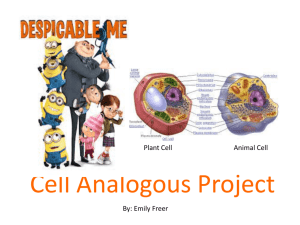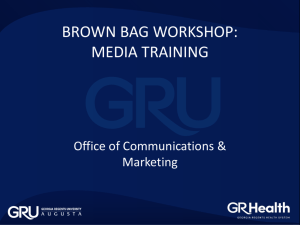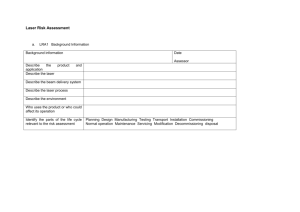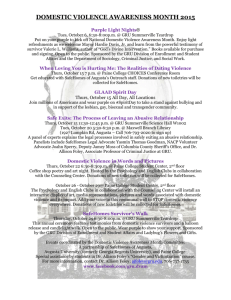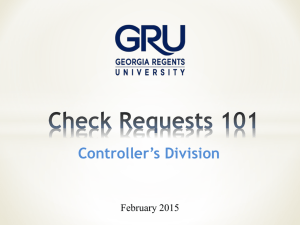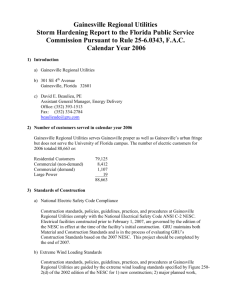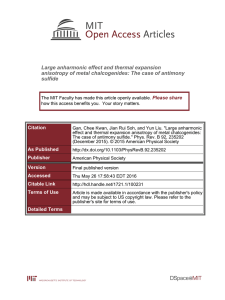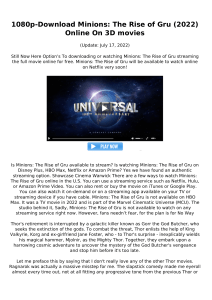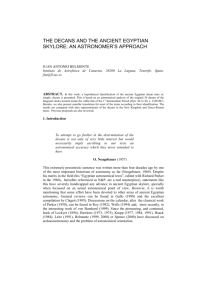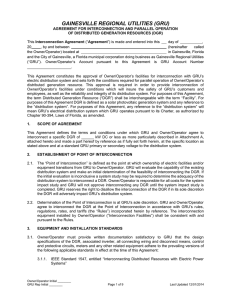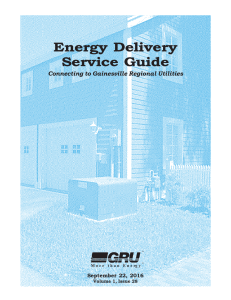Parental Consent For Minor`s Presence in Laboratories
advertisement
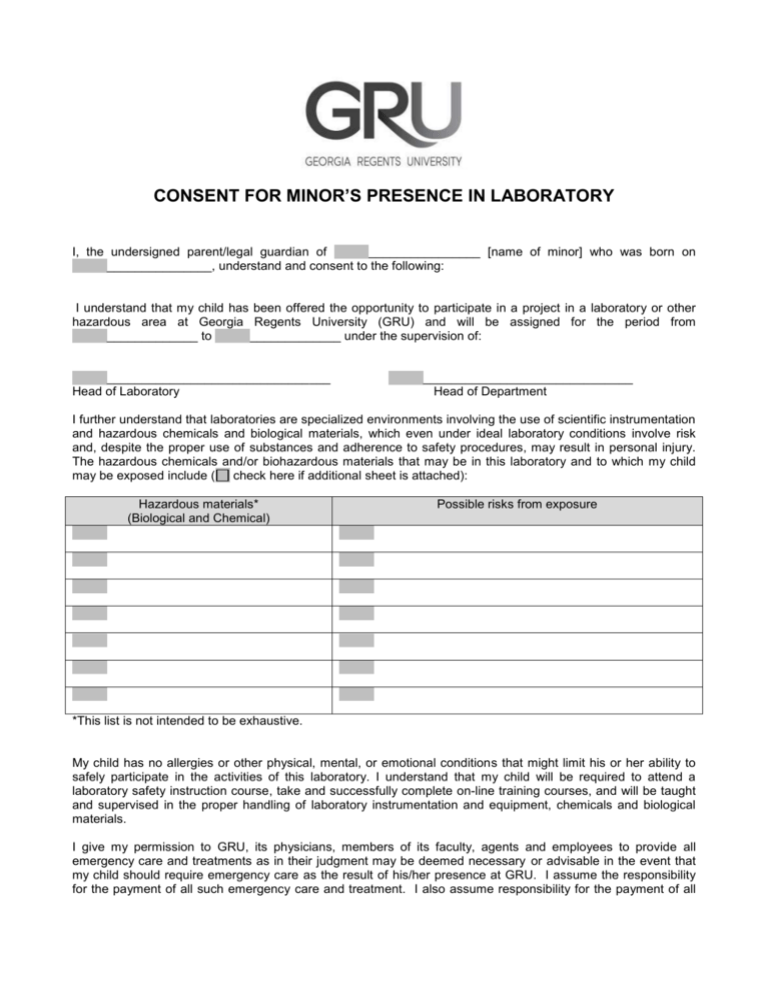
CONSENT FOR MINOR’S PRESENCE IN LABORATORY I, the undersigned parent/legal guardian of ________________ [name of minor] who was born on _______________, understand and consent to the following: I understand that my child has been offered the opportunity to participate in a project in a laboratory or other hazardous area at Georgia Regents University (GRU) and will be assigned for the period from _____________ to _____________ under the supervision of: ________________________________ Head of Laboratory ______________________________ Head of Department I further understand that laboratories are specialized environments involving the use of scientific instrumentation and hazardous chemicals and biological materials, which even under ideal laboratory conditions involve risk and, despite the proper use of substances and adherence to safety procedures, may result in personal injury. The hazardous chemicals and/or biohazardous materials that may be in this laboratory and to which my child may be exposed include ( check here if additional sheet is attached): Hazardous materials* (Biological and Chemical) Possible risks from exposure *This list is not intended to be exhaustive. My child has no allergies or other physical, mental, or emotional conditions that might limit his or her ability to safely participate in the activities of this laboratory. I understand that my child will be required to attend a laboratory safety instruction course, take and successfully complete on-line training courses, and will be taught and supervised in the proper handling of laboratory instrumentation and equipment, chemicals and biological materials. I give my permission to GRU, its physicians, members of its faculty, agents and employees to provide all emergency care and treatments as in their judgment may be deemed necessary or advisable in the event that my child should require emergency care as the result of his/her presence at GRU. I assume the responsibility for the payment of all such emergency care and treatment. I also assume responsibility for the payment of all subsequent treatment and care that my child may require. insurance information below: I have listed emergency contact and medical Emergency Contact Information Primary Secondary Name(s): __________________________ Name(s) _____________________________ Relation to Student: __________________ Relation to Student ____________________ Daytime phone: _____________________ Daytime Phone _______________________ Evening phone ______________________ Evening Phone ________________________ Medical Insurance Information: Insurance Carrier: ______________________ Carrier Group Number _________________ Policy Holder's Name ___________________ Policy Holder's ID#: ___________________ If applicable, Insurance Carrier pre-certification telephone number ____________________________ Address for claim submission __________________________________________________________ In consideration of GRU permitting my child to participate in a project in a laboratory, I hereby release, indemnify and hold harmless the Board of Regents of the University System of Georgia, GRU, and their members, employees, agents and authorized representatives from all claims, demands, rights, causes of action, suits, liabilities, losses, damages, costs and expenses (including attorney fees and court costs) arising out of or resulting from the presence of my child in the above referenced laboratory. Knowing and understanding the circumstances and the risks described above, I consent to allow my child to be present and participate in a project in the above-referenced GRU laboratory. ________________________________ Parent/legal guardian (printed name) ________________________________ Parent/legal guardian’s signature Date ________________________________ Witness (printed name) ________________________________ Witness’ signature Please return completed form to: Date Walter Loring, MS, CHP Director/Interim AVP Environmental Health and Safety Georgia Regents University Environmental Health and Safety Division 1405 Goss Lane, Bldg. CI-1001 Augusta, GA 30912 Fax: 706-721-7499 Your child cannot participate in any laboratory activities until this form is signed and returned and final approval is granted by the Environmental Health and Safety Division. Potential Hazard and Risk Information Sheet Potential Hazards Animals Chemicals General Information Research animals represent a variety of species, temperaments, and health conditions. They can cause physical injuries; transmit zoonotic diseases (diseases passed from animals to humans); or be a source of allergens or toxins. A chemical is a refined compound that may be in the form of a solid, liquid or gas. Potential injuries include burns of the skin or eyes; respiratory problems, allergic reactions; irritation of skin, eyes, and mucous membranes; and illness. Based on their specific effect, chemicals may be classified in one or more of these categories: Allergens-cause allergic reactions Carcinogens-produce cancer Teratogen-affect male and female reproductive systems; may cause birth defects in the developing fetus. Flammables-burn or explode Reactives-react explosively Corrosives-cause tissue damage upon contact including inhalation Toxins-cause illness or death upon exposure. (Neurotoxins specifically affect the nervous system). Equipment and Potential hazards from mechanical or electrical equipment include loud noises, very high or very low temperatures, electrical Instrumentation shock, and pinching/crushing injuries. Gases Gases may be toxic, corrosive, or flammable. They may cause eye and skin irritations, respiratory problems, lightheadedness, asphyxiation, and fainting. Some gases are stored in metal cylinders under high pressure. Compressed gas cylinders can explode causing injury from high speed projectiles. Lasers Light of a single color emitted in a narrow beam. Hazards from lasers are classified as Class 1 – No hazard Class 2 – Insufficient power to cause eye damage within the normal aversion response time. (Class 2a is a Specialcase Class 2 laser designed to be inaccessible to viewing.) Class 3a – Direct viewing of the beam can cause eye injury Class 3b – Direct and indirect viewing of the beam can cause eye injury Class 4 – Direct and indirect viewing of the beam can cause eye injury. Also, a potential fire hazard. Microbiological Living organisms such as viruses, bacteria, fungi, prions, and parasites. Those that are capable of causing disease are Agents called pathogens. The effects of these agents are organism dependent and can range from mild, treatable to severe, untreatable. Hazards from microbiological agents are classified as Biological Safety Level 1 – no hazard to healthy adults Biological Safety Level 2 – cause mild to severe illness Biological Safety Level 3 – cause severe illness and possible death (Minors are not allowed) Biological Safety Level 4 – Not allowed at GRU Radiation/Radioact High energy particles (alpha & beta) or waves (X-rays). Unprotected exposure can cause skin or eye damage, cellular ive Materials damage, and long-term health problems. Recombinant DNA that has been genetically engineered (altered) by combining it with DNA from another source. Viruses may be used as Materials vectors to infect (transfect) cells with the foreign DNA. A transgenic organism is one that has had genes from another organism inserted into its genes. The consequences of introducing such foreign genes into a human body may be difficult to predict. Toxins Poisons produced by microbiological organisms, plants, or animals. These agents can cause tissue and organ damage or death. *This table to be used as a reference for the Consent Form. Examples Scratch, bite (physical injury) Rabies, toxoplasmosis (zoonotic disease) Benzene (carcinogen) Thalidomide (teratogen) Acetone, xylene, alcohol (flammables) Peroxides, acrylamide (reactives) Acids, bases (corrosives) Cyanide (toxin) Autoclaves/sterilizers (burns) Nitrogen, helium, any other nonoxygen gas (asphyxiant) Hydrogen (flammable) Ammonia (toxic) Nitrogen lasers (Class3b) Examples of Class 4 lasers: Free Electron Laser: Argon ion laser, Ti-Sapphire laser, and diode laser Baker’s Yeast, E.coli K12 (Level 1) Influenza, Salmonella (Level 2) Tuberculosis, AIDS (Level 3) Uranium, Phosphorus 32, Sodium 35, X-rays Adenovirus, adeno-associated virus (viral vector) Ricin (plant) Snake venom (animal)
